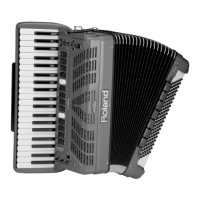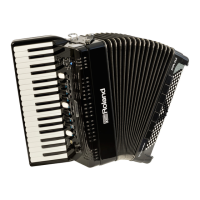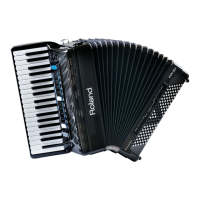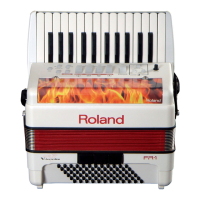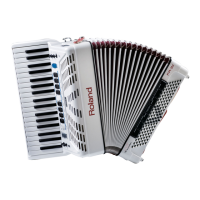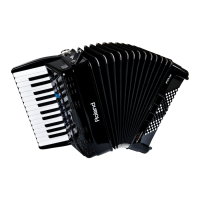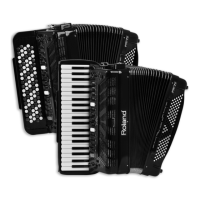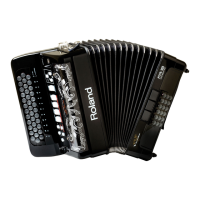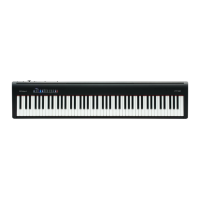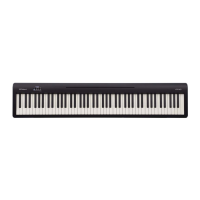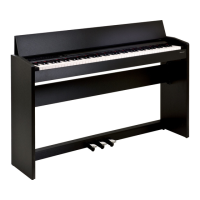Menu Options
108
Orchestra, Bass, etc.).
Warning
All settings of the target memory are overwritten. It might
therefore be a good idea to archive the target Set using “15.7
EXPORT” (p. 110) before proceeding.
1. Use the [DATA/ENTER] knob to select the SET whose
settings you wish to copy (“FROM”).
2. Use the [DATA/ENTER] knob to select the SET to which the
settings should be copied (“TO”).
3. Press [MENU/WRITE] to copy the settings.
The display changes to:
4. Rotate the [DATA/ENTER] knob to select “YES”, then push
the knob to copy the Set.
The display briey conrms this operation.
Select “NO” if you do not want to copy the Set after all.
15.2 Copy EFFECT to SET
This parameter allows you to copy the settings of
the desired eects processors from one Set to
another. This may help you save time, because the
eects processors contain an impressive number
of parameters.
NOTE
This function does not eect the VTW organ eects.
1. Use the [DATA/ENTER] knob to select the type of eect
you desire to copy (“TYPE“).
Parameter Value
TYPE All, Reverb, Chorus, Delay
3. Use the [DATA/ENTER] knob to select the SET whose eect
you wish to copy (“FROM”).
4. Use the [DATA/ENTER] knob to select the SET to which the
eect should be copied (“TO”).
5. Press [MENU/WRITE] to copy the eect.
The display changes to:
6. Rotate the [DATA/ENTER] knob to select “YES”, then push
the knob to copy eects.
The display briey conrms this operation.
Select “NO” if you do not want to copy the eect after all.
15.3 Treble register on current SET
This parameter allows you to change the settings
of the Right Hand register (Treble) in the current
SET.
This may help you save a lot of time, especially for
increasing or decreasing the volume of some or all
reeds, or for selecting a dierent noise type.
1. Select before the Set whose Treble registers you want to
edit simultaneously. See “How to Select Sets” (p. 42).
2. Use the [DATA/ENTER] knob to select the type of register
parameter you desire to edit for all Treble registers
(“TYPE“).
The eld “VALUE” changes depending on the “TYPE” of selected
parameter. See the following table:
TYPE VALUE Explanation
Reed ALL,
Reed 16’,
Reed 8’,
Reed 8’-,
Reed 8’+,
Reed 4’,
Reed 5-1/3’,
Reed 2-2/3’,
Bandoneon, I-Folk, I-Folk2,
Classic, Cajun, Jazz, F-Folk,
D-Folk, Organetto, F-Folk2,
Classic2, Studio, Tradition,
Steierische, OldItaly,
TexMex, Trikitixa, F-Jazz,
Classic3, Bajan
You can set the reed type for all
reed (“Reed ALL”) or for a specic
reed.
Vol All, Vol
16’, Vol 8’,
Vol 8’-, Vol
8’+, Vol 4’,
Vol 5-1/3’,
Vol 2-2/3’,
O, –40~“Std”~+40
You can set the reed volume for
all reed (“Vol All”) or for a specic
reed.
Noise,
Bandoneon, I-Folk, I-Folk2,
Classic, Cajun, Jazz, F-Folk,
D-Folk, Organetto, F-Folk2,
Classic2, Studio, Tradition,
Steierische, OldItaly,
TexMex, Trikitixa, F-Jazz,
Classic3, Bajan
It allows you to specify what
kind of instrument should
generate the noise.
Noise Vol, O, –40~“Std”~+40
It allows you to specify how
prominent the noise should be.
Mus
Detune
O, Dry, Classic, F-Folk,
American_L, American_H,
North_Eu, German_L,
D-Folk_L, Italian_L,
German_H, Alpine,
Italian_H, D-Folk_H,
French, Scottish
It allows you to choose the
system used for detuning the
8’ reeds
3. Use the [DATA/ENTER] knob to set the value (“VALUE”).
4. Press the [MENU/WRITE] to proceed.
If you selected “Reed ALL” or “Vol ALL”, the following warning may
be displayed:
5. To make your changes use the [DATA/ENTER] knob to
select “YES”. Otherwise, select “NO”.
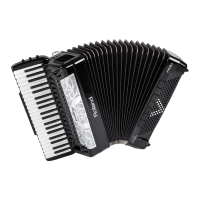
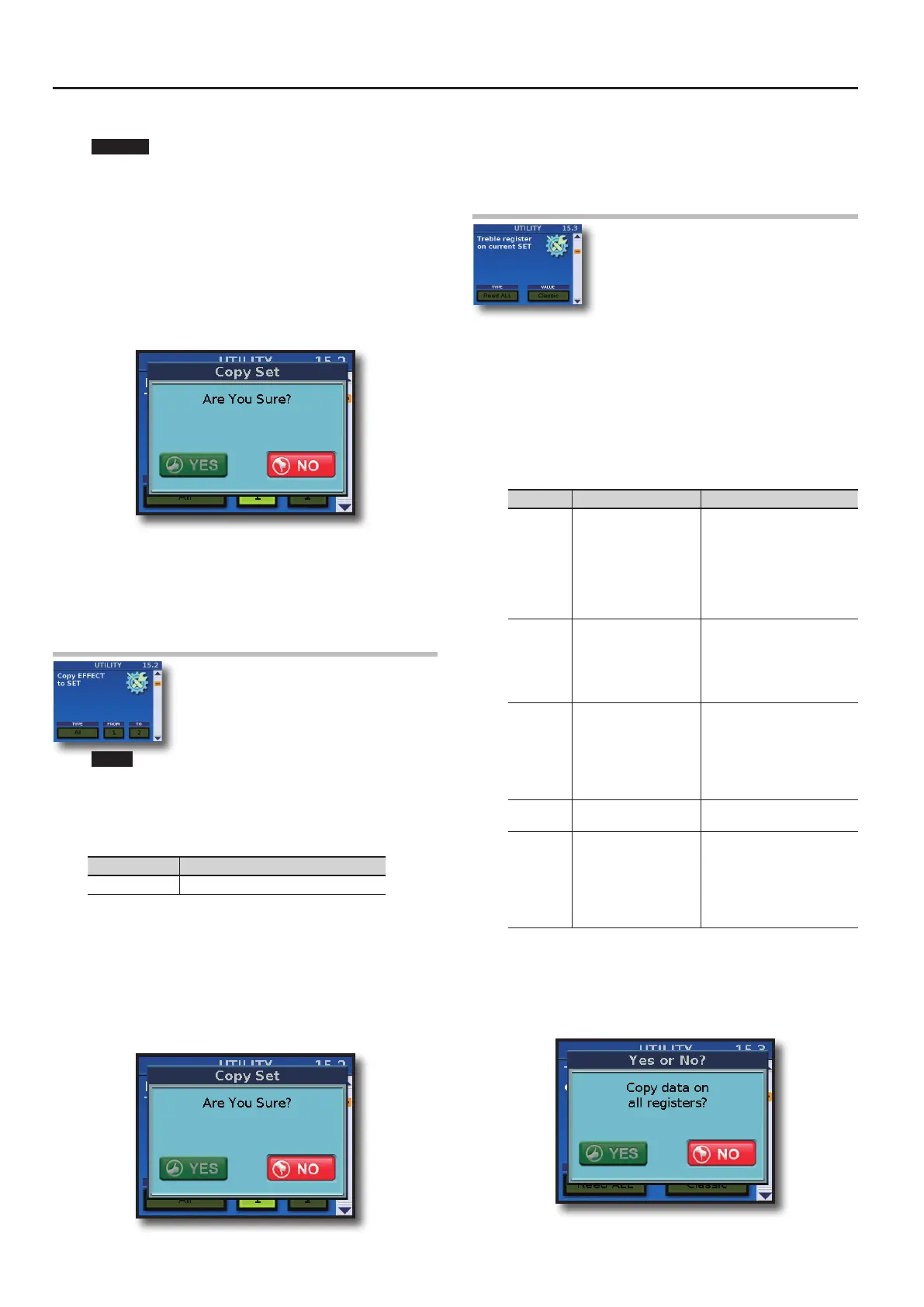